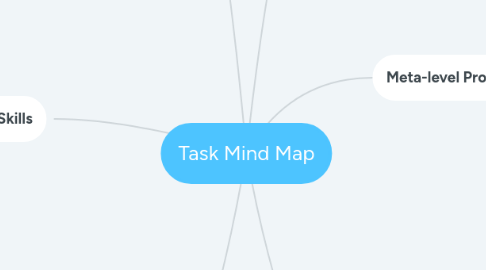
1. Conceptual Knowledge
1.1. ISTE.1d. Empowered Learner
1.1.1. 1d.1 When given information on social media, students are able to tell opinions apart from facts and explicitly explain the difference between them.
1.1.2. 1d.2 When given specific information, students are able to categorize it based on its credibility, source and mode of production.
1.1.3. 1d.3 When given a technology tool, students are able to introduce the basic knowledge of the tool (eg: ways to find information on the tool and tasks the tools can be used for) and what kind of information they can get from it after exploration.
1.1.4. 1d.4 Students should have an overview of the common and emerging technology for collecting and creating information and compare different information technologies to help them choose one they want based on their own task.
2. Procedural Skills
2.1. ISTE.3a. Locate Information
2.1.1. 3a.1 When given a task to collect information, students are able to choose the technology they use to search information.
2.1.2. 3a.2 When given a task to ask a real-life question, students are able to decide on "search signals" and search strategies to explore it using technology.
2.1.3. 3a.3 When given a task to do research, students are able to make a plan for what information they need and how to find it.
2.2. ISTE.3b. Evaluate Information
2.2.1. 3b.1 When given an online news, students are able to find the source and explain how a news story goes from source to what they see now.
2.2.2. 3b.2 When given an online story, students are able to use E.S.C.A.P.E. strategy to evaluate the story.
2.3. ISTE.3c. Create Information
2.3.1. 3.c.1 Students are able to select and report on a topic of personal interest by collecting and integrating online information.
2.4. CCSS.ELA-LITERACY.CCRA.W.6. Publish and Collaborate
2.4.1. W.6.1 After finishing the report, students are able to use technology to publish and show the report to others.
2.4.2. W.6.2 Students are able to use technology to share their work, communicate and get feedback from the audience.
3. Dispositions
3.1. ISTE: 2. Digital Citizen
3.1.1. 2.1 Students should know the importance and execute the process of protecting their own and others' copyright online.
3.1.2. 2.2 When given a misleading information online, students are able to Handle false information to prevent further spread of the risk
3.2. ISTE: 6c. Creative Communicator
3.2.1. 6.c.1 Given a task, students are able to choose technology and use it to save team outcomes and collaborate with others to finish the task online
3.2.2. 6.c.2 In an online environment, students are able to participate in online discussion actively and explain their opinions to others explicitly.
4. Meta-level Conceptual
4.1. CCSS.ELA-LITERACY.CCRA.R.1 Produce Citation
4.1.1. R.1.1 Given the citation of online information, students are able to explain the meaning of the citation to others explicitly.
4.1.2. R.1.2 After finishing their own online work, students are able to produce standard citation for themselves to help others reference conveniently and protect their own copyright.
4.2. ISTE: 3d. Build Knowledge
4.2.1. 3d.1 Given never-learnt question, students are able to find online resource and extract the information they need to learn new knowledge.
4.2.2. 3d.2 When collecting and integrating online information, students are able to use concept map to show the information structure of their task to others.
5. Meta-level Procedural
5.1. CCSS.ELA-LITERACY.CCRA.W.9 Evidence
5.1.1. W.9.1 When doing research online, students are able to transfer the information they collected and integrated into the evidence they need to support the research.
6. Meta-level Disposition
6.1. NCSS 8 Impact on Society
6.1.1. 8.1 Reflecting on their own use of social media, students are able to realize the impact of their online behaviors on others
6.1.2. 8.2 Reflecting on the report (class task) they did, students are able consider the positive and negative influence of their work and write a description of the use for the audience (including precautions)
